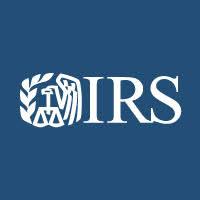The Internal Revenue Service assured taxpayers and tax professionals Jan. 12 that updates to key federal tax forms and instructions are complete and will be available when Americans begin filing their tax returns.
Most individual taxpayers file IRS Form 1040 or Form 1040-SR once they receive Forms W-2 and other earnings information from their employers and payers. IRS has incorporated recent changes to the tax laws into the forms and instructions, and shared the updates with its partners who develop the software used by individuals and tax professionals to prepare and file their returns. Forms 1040 and 1040-SR and the associated instructions are available now on IRS.gov and are being printed for taxpayers who need a hard copy.
Economic Impact Payments are an advance payment of the Recovery Rebate Credit. Important updates include the Recovery Rebate Credit worksheet on page 59 of the 1040/1040-SR instructions. Anyone who didn’t receive the full amount of both Economic Impact Payments should include the amounts they received, before any offsets, when they file. Anyone who received the full amount for both Economic Impact Payments should not include any information about the advance payments when they file their tax return.
Also new this year is the option to use prior year income amounts when computing the Earned Income Tax Credit and the Additional Child Tax Credit.
The IRS has not yet announced a start date for the 2021 filing season. IRS Free File will open in mid-January when participating providers begin accepting returns. The IRS Free File providers will accept completed tax returns and hold them until they can be filed electronically with the IRS.
Latest Economic Impact Payments automatic for eligible taxpayers
This month, the Treasury Department and the IRS are sending the second round of Economic Impact Payments to millions of Americans as part of the implementation of the Coronavirus Response and Relief Supplemental Appropriations Act.
Taxpayers don’t need to take any action to receive these payments. Economic Impact Payments are automatic for eligible taxpayers who filed a 2019 tax return and those who receive Social Security retirement, survivor or disability benefits (SSDI), Railroad Retirement benefits, Supplemental Security Income (SSI) and Veterans Affairs beneficiaries who didn’t file a tax return.
These second round of payments follow the successful delivery of more than $270 billion in CARES Act Economic Impact Payments to about 160 million Americans in 2020.
Eligible individuals who did not receive an Economic Impact Payment – either the first or the second payment – can claim a Recovery Rebate Credit when they file their 2020 taxes this year. The IRS urges taxpayers who didn’t receive an advance payment to review the eligibility criteria when they file their 2020 taxes; many people, including recent college graduates, may be eligible for a credit.
Eligible individuals who didn’t receive the full amount of both Economic Impact Payments should claim the missing amount as a credit. Anyone who did receive the full amount for both Economic Impact Payments should not include any information about their payment when they file their taxes – they’ve already received the full amount of the Recovery Rebate Credit as advance payments.
For the latest IRS forms and instructions, visit the IRS website at www.irs.gov/forms. Visit IRS.gov for the latest information about the Economic Impact Payments and filing 2020 tax return.


